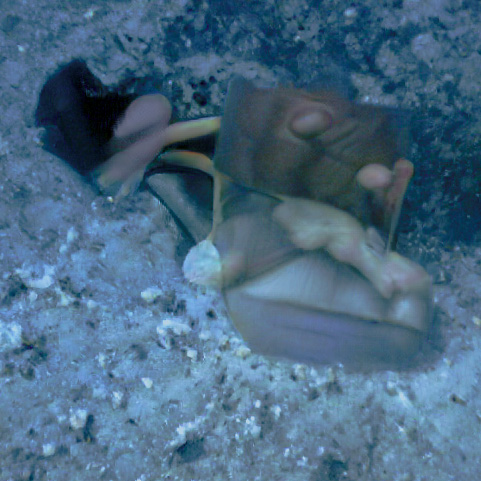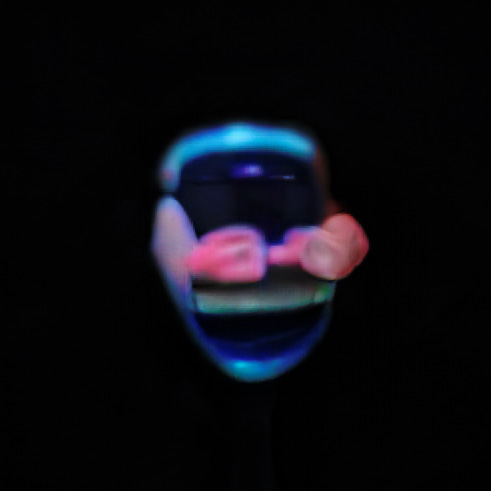Poststructure

J’ai passé ma journée à m’imaginer sans infrastructure. Le renouvèlement disparu avec. Il n’y avait plus le rythme de remplacement des objets, l’un en chassant l’autre par l’acte d’achat. Il fallait les garder aussi longtemps que possible. Ils s’abimaient, vieillissaient et tout était recouvert de poussière qui venait craqueler la surface.
J’ai imaginé ce monde vieilli.
J’ai imaginé l’absence des circulations d’énergie et des moyens de locomotion. C’était presque un monde à l’arrêt, comme vitrifié par une couche à travers laquelle on pouvait encore apercevoir ce que ces objets avaient été.
Tout ce que je touchais pouvait être affecté par cet arrêt des machines et des usines, des réseaux et des routes, des tuyaux et des flux. C’était immense, dense et j’avais même du mal à me distinguer de cette infrastructure écophagique.
C’était donc devenu notre monde.
Mes habits et tout ce que je touchais, tout ce que ma main maniait et métabolisait dans la répétition de ses gestes, étaient à la limite de l’utilisable. Ce n’est pas qu’on ne pouvait rien faire, mais j’imaginais les difficultés et le caractère rugueux d’un monde sans industrie où il fallait prendre soin de ces objets antiques et s’effrayer qu’à chaque usage ils ne se cassent et ne soient plus que des débris.

J’ai imaginé que ce monde ne devait pas être très loin de certaines parties de la Terre actuelle et que cette terreur que quelque chose ne marche plus, le soin qu’on devait y apporter, devait déjà affecter des peuples et des corps et décomposer leurs mouvements : faire attention aux choses, faire attention à ce qu’on fait.
Un autre conflit entre la Terre et les mondes.

J’ai donc imaginé aujourd’hui ce monde à venir qui ne serait pas un retour en arrière, parce qu’il y aurait eu, nous aurions eu l’expérience d’une fluidité oubliant la forme, la matière, l’infrastructure opérant leur rassemblement par la fonction. Nul état de nature donc, si ce n’est une nature hantée, habitée, traversée par ses propres restes.
Mon appartement, les rues, la ville, les magasins, ces espaces devenaient des fantômes de ce qu’ils avaient été. Serions-nous nostalgiques de ce présent devenu passé ? Regarderions-nous avec envie ce moment bref où la fluidité nous faisait oublier nos gestes et la tension aux objets ? Allions-nous même nous en souvenir ou tout ceci, toute cette infrastructure, ses corps, sa mémoire même allait-elle progressivement disparaitre sous la poussière grise et granuleuse ?
Et la densité étouffante que nous percevons dans ce monde-ci, qu’allait-elle devenir?

J’ai alors imaginé que nos structures de pensée n’avaient jamais été que l’expression de l’influence de l’infrastructure sur des corps.
–
I spent my day imagining myself without infrastructure. The renewal disappeared with it. There was no longer the rhythm of replacing objects, one chasing the other by the act of buying. They had to be kept as long as possible. They were getting damaged, getting old, and everything was covered with dust that cracked the surface.
I imagined this world aged.
I imagined the absence of energy circulation and means of locomotion. It was almost a world at a standstill, as if vitrified by a layer through which one could still see what these objects had been.
Everything I touched could be affected by this standstill of machines and factories, networks and roads, pipes and flows. It was huge, dense and I could hardly distinguish myself from this eco-physical infrastructure.
So it had become our world.
My clothes and everything I touched, everything my hand handled and metabolized in the repetition of its gestures, were at the limit of usability. It’s not that nothing could be done, but I imagined the difficulties and the roughness of a world without industry, where these ancient objects had to be taken care of and scared that with each use they would break and become nothing but debris.
I imagined that this world must not be very far from certain parts of the present Earth and that this terror that something is no longer working, the care that had to be taken there, must already be affecting people and bodies and breaking down their movements: being careful with things, being careful with what we do.
Another conflict between the Earth and the worlds.
So I imagined today this world to come that would not be a return to the past, because there would have been, we would have experienced a fluidity forgetting form, matter, infrastructure bringing them together by function. No state of nature, then, except a haunted nature, inhabited, traversed by its own remains.
My apartment, the streets, the city, the shops, these spaces became ghosts of what they had been. Are we nostalgic for this present that has become past? Would we look with envy at that brief moment when fluidity made us forget our gestures and the tension in the objects? Would we even remember it, or would all this, all this infrastructure, its bodies, its very memory gradually disappear under the gray and grainy dust?
And the stifling density that we perceive in this world, what would become of it?
I then imagined that our thought structures had never been anything more than the expression of the influence of infrastructure on bodies.
